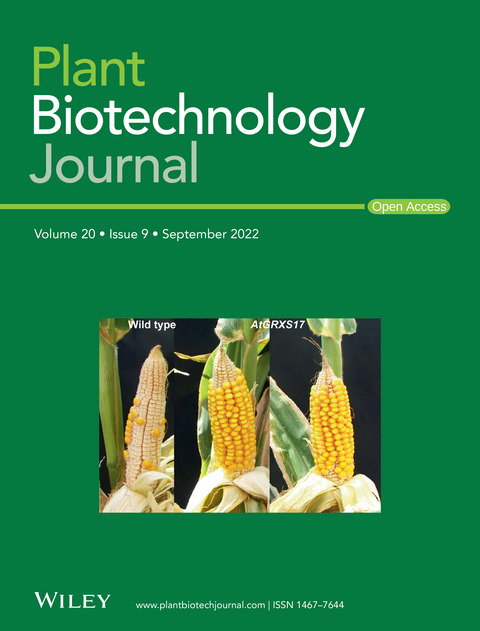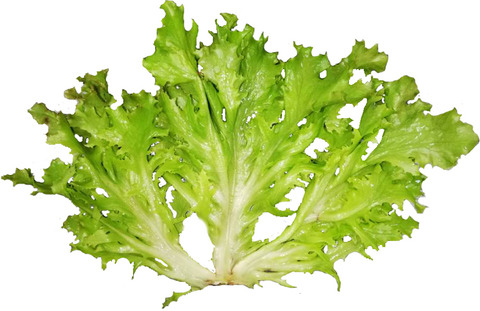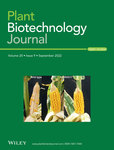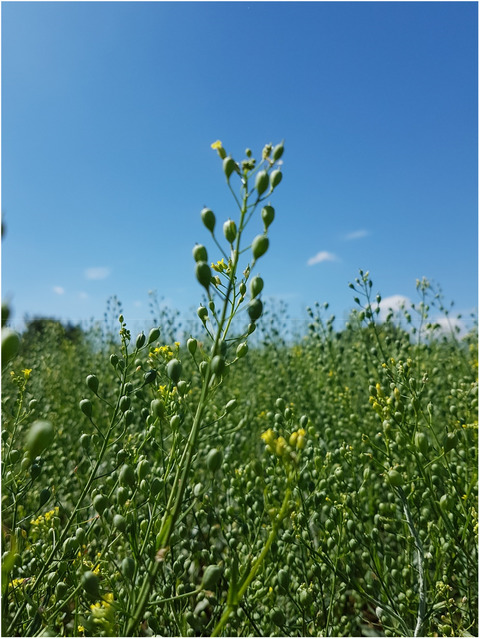Journal list menu
Export Citations
Download PDFs
Issue Information
Issue Information
- Pages: 1637-1638
- First Published: 23 August 2022

Front cover image:
Global warming and food security are preeminent worldwide concerns. Various crop plants are exposed to heat stress during critical reproductive stages, having a devastating impact on yield. The cover illustration shows that redox-engineered maize plants, through constitutive ectopic expression of a single gene coding for the monothiol glutaredoxin S17 (AtGRXS17), display robust thermotolerance without any adverse growth effects during reproductive and grain-filling stages, resulting in large yield increases in both greenhouse and fi eld conditions. Cover illustration refers to the article in this issue (Park et al., 1819–1832).
Brief Communication
Multi-omics mapping of chromatin interaction resolves the fine hierarchy of 3D genome in allotetraploid cotton
- Pages: 1639-1641
- First Published: 21 June 2022
The telomere-to-telomere gap-free genome of four rice parents reveals SV and PAV patterns in hybrid rice breeding
- Pages: 1642-1644
- First Published: 24 June 2022
Histone acetyltransferase TaHAG1 interacts with TaNACL to promote heat stress tolerance in wheat
- Pages: 1645-1647
- First Published: 28 June 2022
Spatial transcriptome analysis on peanut tissues shed light on cell heterogeneity of the peg
- Pages: 1648-1650
- First Published: 06 July 2022
Review Article
A whiff of the future: functions of phenylalanine-derived aroma compounds and advances in their industrial production
- Pages: 1651-1669
- First Published: 31 May 2022
Research Articles
Genome-wide analyses of PAM-relaxed Cas9 genome editors reveal substantial off-target effects by ABE8e in rice
- Pages: 1670-1682
- First Published: 06 May 2022
The MdBBX22–miR858–MdMYB9/11/12 module regulates proanthocyanidin biosynthesis in apple peel
- Pages: 1683-1700
- First Published: 08 May 2022
Genetic variation in CaTIFY4b contributes to drought adaptation in chickpea
- Pages: 1701-1715
- First Published: 09 May 2022
CRISPR/Cas9-mediated tetra-allelic mutation of the ‘Green Revolution’ SEMIDWARF-1 (SD-1) gene confers lodging resistance in tef (Eragrostis tef)
- Pages: 1716-1729
- First Published: 12 May 2022
A catalogue of resistance gene homologs and a chromosome-scale reference sequence support resistance gene mapping in winter wheat
- Pages: 1730-1742
- First Published: 13 May 2022
Ubiquitin ligase OsRINGzf1 regulates drought resistance by controlling the turnover of OsPIP2;1
- Pages: 1743-1755
- First Published: 19 May 2022
The upregulated LsKN1 gene transforms pinnately to palmately lobed leaves through auxin, gibberellin, and leaf dorsiventrality pathways in lettuce
- Pages: 1756-1769
- First Published: 30 May 2022

Cultivated lettuce (Lactuca sativa), domesticated from prickly lettuce (L. serriola), is one of the most important green leafy vegetables worldwide. Lettuce is also a model species for hydroponics, and an ideal plant to be engineered to produce oral vaccines or valuable pharmaceuticals. Leaf shape is an important trait for plant species, and leaf shape per se is an agronomic trait for leafy vegetables such as lettuce. Lobed leaves have been studied in several species. However, the mechanism underlying the variation between pinnately and palmately lobed leaves remain unclear. For the first time, we dissected the genetic mechanisms underlying palmately lobed leaves in plants, providing novel insights on leaf development. The palmately lobed leaves contribute to the sensory quality of lettuce, and our results will facilitate the breeding of lettuce cultivars with ideal leaf shapes.
Retrieving a disrupted gene encoding phospholipase A for fibre enhancement in allotetraploid cultivated cotton
- Pages: 1770-1785
- First Published: 28 May 2022
A single promoter-TALE system for tissue-specific and tuneable expression of multiple genes in rice
- Pages: 1786-1806
- First Published: 31 May 2022
Natural allelic variation of GmST05 controlling seed size and quality in soybean
- Pages: 1807-1818
- First Published: 01 June 2022
Redox-engineering enhances maize thermotolerance and grain yield in the field
- Pages: 1819-1832
- First Published: 02 June 2022
Using field evaluation and systematic iteration to rationalize the accumulation of omega-3 long-chain polyunsaturated fatty acids in transgenic Camelina sativa
- Pages: 1833-1852
- First Published: 02 June 2022








